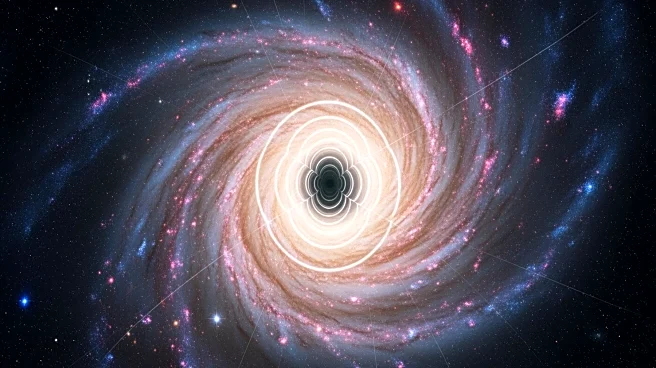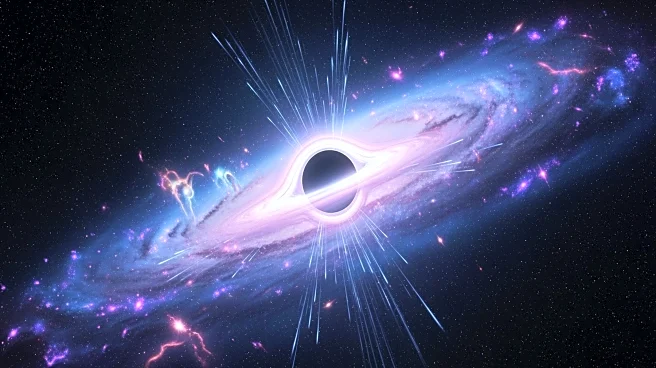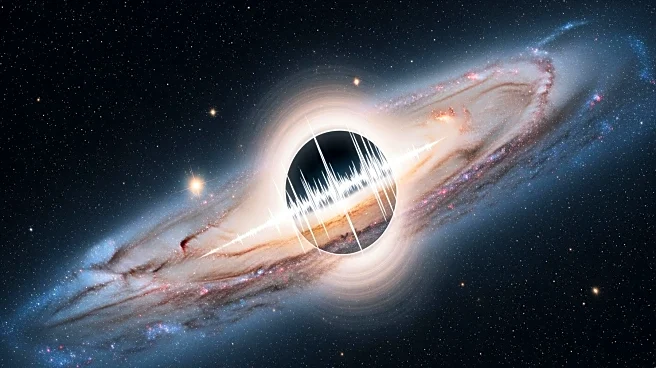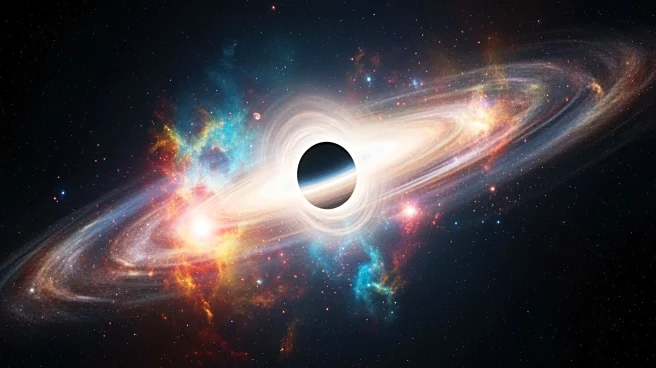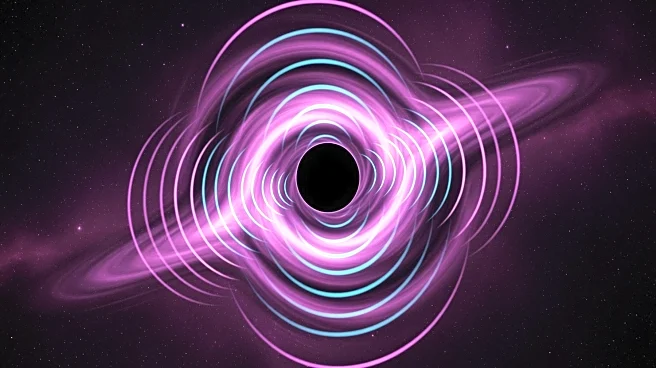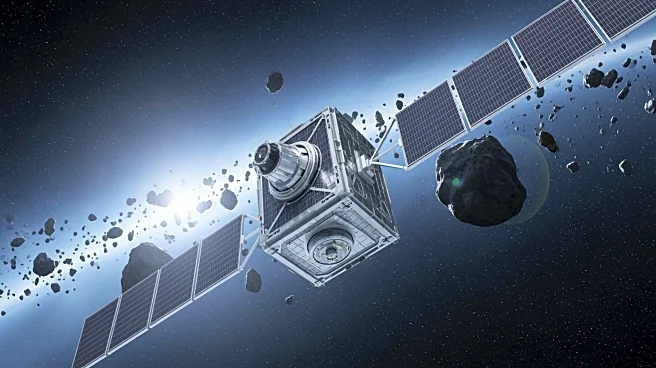What's Happening?
Scientists have observed a tidal disruption event (TDE) where a black hole rips apart a passing star, occurring outside the central region of a galaxy for the first time. This discovery revealed powerful and rapidly changing radio waves, indicating that
supermassive black holes can exist and remain active far beyond galactic centers. The event, named AT 2024tvd, exhibited the fastest-changing radio emission ever recorded from a black hole consuming a star. An international team led by Dr. Itai Sfaradi and Prof. Raffaella Margutti of the University of California, Berkeley, along with collaborators including Prof. Assaf Horesh of the Hebrew University of Jerusalem, identified this TDE producing bright radio signals away from a galaxy's core. The discovery was made possible through observations from several premier radio telescopes, including the Very Large Array (VLA) and the Arcminute Microkelvin Imager Large Array (AMI-LA) in the UK.
Why It's Important?
This discovery challenges existing theories about the behavior and location of supermassive black holes, suggesting they can exist in surprising and previously overlooked locations. The findings indicate that black holes can episodically 'reawaken' after periods of inactivity, with delayed and complex processes following the disruption of a star. This has significant implications for astrophysics, potentially altering the understanding of black hole dynamics and their role in galaxy formation and evolution. The research places Israel at the forefront of international astrophysics, highlighting the collaborative efforts of scientists from the United States, Europe, and Israel.
What's Next?
Further research is expected to explore the mechanisms behind the delayed radio emissions and the episodic reawakening of black holes. Scientists may conduct additional observations using advanced radio telescopes to gather more data on similar events. This could lead to a deeper understanding of the physical processes involved in tidal disruption events and the behavior of supermassive black holes. The findings may also prompt revisions in theoretical models of black hole activity and their influence on surrounding cosmic structures.
Beyond the Headlines
The discovery of a rogue black hole emitting record radio blasts could have broader implications for understanding the universe's structure and the distribution of dark matter. The event highlights the importance of radio astronomy in uncovering hidden cosmic phenomena and may inspire new technological advancements in telescope design and data analysis techniques. Additionally, the research underscores the value of international collaboration in advancing scientific knowledge and achieving breakthroughs in astrophysics.
